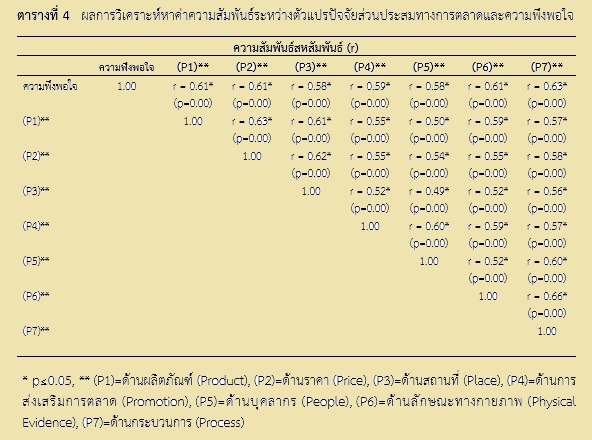THE MARKETING MIX FACTORS AFFECTING TO SIAM AMAZING PARK TOURISTS’ SATISFACTION
Main Article Content
Abstract
Purpose: The purposes of this research were to study the marketing mix factors of Siam Amazing Park, the satisfaction of Siam Amazing Park tourists, and the factors of marketing mix that affect the satisfaction of Siam Amazing Park tourists.
Methods: This research was survey research. The sample in this study consisted of 440 tourists of Siam Amazing Park. The questionnaires were created by the researcher as the method to collect data with a content validity of 0.85 and Cronbach's Alpha Coefficient of 0.911. Data were analyzed using frequency, percentages, means, standard deviation and determined the marketing mix factors affecting of Siam Amazing Park tourists' satisfaction by using multiple regression at the significant level of 0.05
Results: The marketing mix factors of Siam Amazing Park has an average overall in a very good level (Mean=4.21, SD=0.46). The Siam Amazing Park tourists’ satisfaction has an average overall in a good level (Mean=4.18, SD=0.51). The regression coefficients in the standard form (Beta) found that the predictors with the highest Beta values were Process (Beta=0.170), followed by Price (Beta=0.156), Physical evidence (Beta=0.147). Products (Beta=0.136), People (Beta=0.125), Promotion (Beta=0.113), Place (Beta=0.109), respectively. And all of marketing mix factors were able to predict the tourists’ satisfaction by 58.00 percent.
Conclusion: All of marketing mix factors were able to predict the tourists’ satisfaction at Siam Amazing Park by 58.00 percent. The process was the most affecting factor to the Siam Amazing Park tourists' satisfaction.
Article Details

This work is licensed under a Creative Commons Attribution-NonCommercial-NoDerivatives 4.0 International License.
References
Cochran, W. G. (1977). Sampling Techniques. New Delhi: Wiley Eastern.
Department of Tourism, (2014). Tourism Quality Standards Assessment Guide for Recreational Attractions. Bangkok: The War Veterans Organization of Thailand Under Royal Patronage of His majesty the King.
Karnjanakit, S. (2017). Recreation and Tourism Industry. Bangkok: Chulalongkorn University Publishers.
Kotler, P. (1994). Marketing management: Analysis planning implementation and control. (8thed.). Englewood cliffs: Prentice Hall.
Kotler, P., and Keller, K. L. (2014). Marketing Management. Upper Saddle River, N.J: Pearson Prentice Hall.
Masori, Y. (2009). Guidelines for the development of recreational attractions at Dream World Amusement Park. Bangkok: Naresuan University.
Pikkemaat, B., & Schuckert, M. (2007). Success factors of theme parks - An exploratory study. Tourism. 55(2). 197-208.
Pongsathaporn, S. (2003). Service Marketing. Bangkok: NUT Repubic. Statement of Financial Position of Siam Park Bangkok Company Limited. (Online). Retrieved July 11, 2019, from https://datawarehouse.dbd.go.th/company/profile/5/0105542050866.
Torkildsen, G. (2005). Leisure and Recreation Management. Oxon: Routledge.
Watt, David C. (2006). Sports Management and Administration. (2nd ed.). London: Routledge Taylor and Francis Group.
Zeithaml, V. A., and Bitner, M. J. (2000). Services Marketing: Customer Focus Across the Firm. (2nd ed). Boston, Massachusetts: McGraw-Hill.

